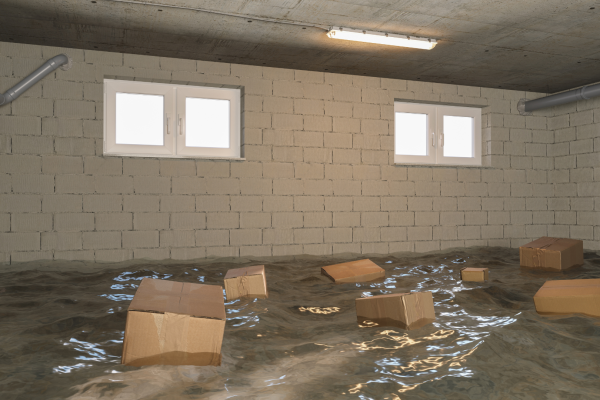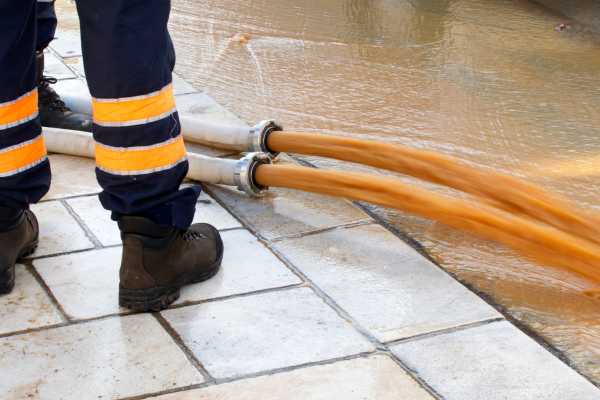Effective Solutions for Dealing with Flood Damage
Flood damage can have devastating effects on your property, leaving you feeling helpless and overwhelmed. Understanding the types of flood damage is crucial to finding effective solutions. Whether it’s river, coastal, or urban flooding, each type has its unique impact on buildings and infrastructure. In this blog, we will cover all aspects of flood damage – from the immediate steps you need to take to safely reenter your flooded home to dealing with flood insurance claims. We’ll discuss the importance of discarding unsafe food and using safe water and how to dry out your home properly to prevent mold growth. By following these steps, you can effectively deal with flood damage and protect your property from further harm.

Understanding the Types of Flood Damage
Understanding the types of flood damage is crucial for effective recovery and restoration. Different types of flood damage can include property damage, water damage, and mold growth. Flood damage not only poses health risks but also presents electrical hazards and damages personal belongings. Foundations, walls, flooring, and electrical systems are susceptible to damage during flooding. Rapid runoff, storm surge, and heavy rainfall all contribute to the extent of flood damage. It is important for property owners to be aware of these risks and take necessary precautions. Additionally, understanding the various types of flood damage can help in determining the appropriate steps to mitigate the damage and prevent further issues such as the spread of mold. By having this knowledge, individuals can make informed decisions regarding their flood insurance policy, seek assistance from organizations like FEMA, and implement flood risk management strategies.
The Impact of River and Coastal Flooding on Buildings
River and coastal flooding can have a significant impact on buildings, causing structural damage that compromises their stability. The force of floodwater can erode foundations, weaken walls, and even damage roofs. Factors such as water velocity and storm surge can further contribute to the deterioration of a building’s structural integrity. Additionally, flooding can wreak havoc on electrical systems, appliances, and water supply systems.
The consequences of river and coastal flooding extend beyond the physical damage to buildings. The floodwater can lead to water contamination, sewage backup, and pose significant health risks. The spread of mold is also a common concern following flooding, as the damp conditions create an ideal environment for its growth.
Understanding the impact of river and coastal flooding on buildings is crucial for effective flood risk management and mitigation efforts. Property owners should take necessary measures to protect their properties, such as implementing flood insurance policies offered by programs like the National Flood Insurance Program. By being aware of these impacts, individuals can better prepare for potential flood events, safeguard their buildings, and minimize the long-term consequences of flooding.
Consequences of Urban Flooding on Infrastructure
Urban flooding has severe consequences on infrastructure, with roads, bridges, and drainage systems being particularly vulnerable. The force of floodwater can cause significant damage to power lines, electrical equipment, and transportation systems, leading to disruptions in daily life. Additionally, urban flooding can result in water supply disruptions, property damage, and sewage backup, posing a threat to public health and safety. The combination of heavy rainfall, flash flooding, and rapid runoff can overwhelm storm water management systems, which are not designed to handle such extreme conditions. This can result in traffic disruptions, further water damage, and an increased risk of health hazards. It is crucial to address the consequences of urban flooding on infrastructure to minimize its impact and ensure the resilience of cities in the face of natural disasters.

Steps to Safely Re Enter Your Flooded Home
Ensuring personal safety should be the top priority before reentering your flooded home. It is important to remember that floodwaters can pose significant risks to health and safety. Discard any unsafe food that may have been contaminated by floodwater and use safe water for drinking and cleaning purposes. This will help prevent the spread of diseases and other health risks associated with contaminated water. Additionally, properly drying out your home is crucial in preventing mold growth and further damage to your property. Mold can quickly spread in damp and humid conditions, leading to potential health issues and expensive repairs. Conduct a thorough inspection of your property to identify any potential hazards, such as structural damage or electrical issues. In some cases, it may be necessary to hire professionals like electricians or water damage restoration experts to ensure a safe reentry and proper restoration of your home.
Importance of Discarding Unsafe Food and Using Safe Water
During a flood, the safety of food and water becomes a major concern. Floodwater can contain contaminants that make both food and water unsafe for consumption. It is important to discard any perishable food items that have been exposed to floodwater. Additionally, disinfecting water sources is necessary to ensure their safety. Consuming contaminated food or water can have adverse health effects, so it is crucial to take precautions. Following guidelines from health authorities can help ensure food and water safety during and after a flood. Proper sanitation practices are also essential to prevent the spread of disease. Remember, taking these measures is vital to safeguard your well-being in the aftermath of a flood.
The Right Way to Dry Out Your Home to Prevent Mold
Proper drying techniques are crucial in preventing mold growth after flooding. After removing standing water, it is important to use dehumidifiers and increase ventilation to promote proper drying. Thoroughly cleaning and disinfecting affected surfaces also helps to prevent mold growth. It is essential to monitor moisture levels and ensure proper drainage in order to effectively dry out the home. In some cases, seeking professional assistance for thorough water damage restoration may be necessary. By following these steps, homeowners can greatly reduce the risk of mold growth and further damage to their property.
How to Deal with Flood Insurance Claims?
Dealing with flood insurance claims requires careful documentation of damage, prompt communication with your insurance provider, and understanding policy coverage. Keep records of expenses related to flood damage and consider consulting a public insurance adjuster for guidance. Familiarize yourself with the federal flood insurance program (NFIP) for valuable insights.
Conclusion
In conclusion, it is crucial to understand the different types of flood damage and take necessary steps to address them promptly. Whether it is river and coastal flooding or urban flooding, the impact on buildings and infrastructure can be significant. Once your home is flooded, ensure that you prioritize safety by discarding unsafe food and using safe water. Properly drying out your home is essential to prevent the growth of mold. If you have flood insurance, make sure you know how to navigate the claims process effectively. Remember, dealing with flood damage requires a systematic approach and professional assistance in some cases. Stay informed and take the necessary actions to minimize the impact of flood damage on your property and well-being.
